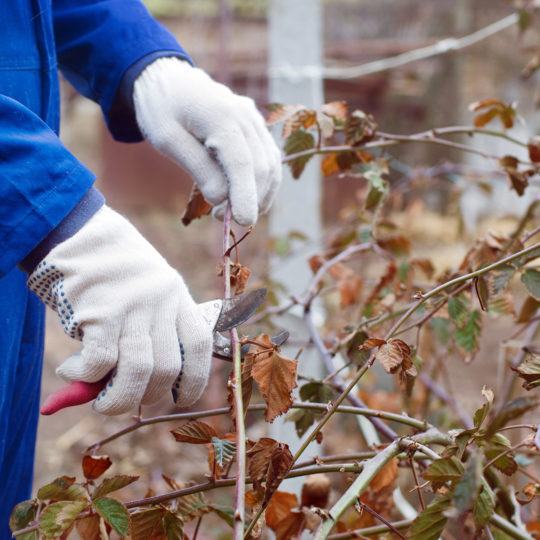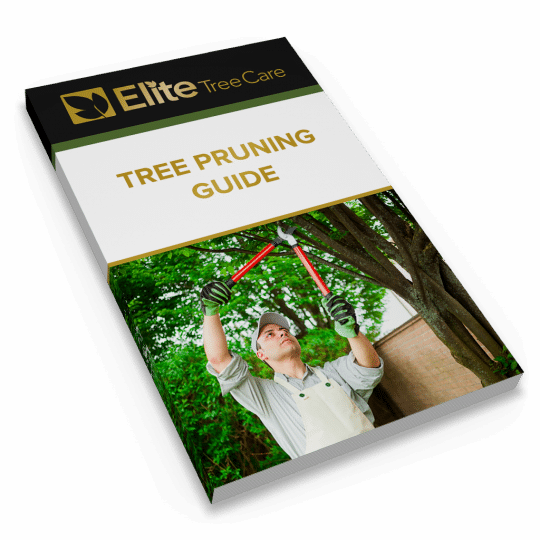9 Winter Tree Pruning Tips
What Plants to Prune, Why, and How
Posted
February 13, 2025

Even though it’s the middle of winter, it’s one month closer to spring! This dormant period for plants is a great time to prune many trees and shrubs to prepare them for the growing season. Learn which trees should be trimmed now, why winter is best, and some proper pruning techniques.
Why Winter is Ideal for Pruning Trees and Shrubs
Trees and shrubs that go dormant this time of year are still gearing up for growing once the weather warms. Since many have dropped their leaves, it’s easier to see the structure and conditions of branches. The following signs are key factors for what branches should be cut:
- Broken
- Dead
- Diseased
- Criss-crossing
Removing these branches prevents the weaker parts from potentially breaking and damaging the surroundings. It also encourages the plant to regrow stronger replacements. However, the timing of when these branches are pruned determines how strong regrowth can be. When you prune right before the plant wakes up, it puts more energy into producing new, healthy leaves, flowers, and fruit.
Another sign to watch out for: buds. If you already notice new growth on the tree or shrub, this is an indication it will bloom in the spring. Wait to prune these plants once the flowers have faded.
What Plants to Prune Now
Prune the following trees and shrubs in late winter or early spring. They shouldn’t have new buds on them yet, since they typically flower on new wood in the summer:
- Deciduous trees and shrubs
- Fruit trees
- Evergreen shrubs
- Summer-flowering shrubs
Of course, if there’s another tree or shrub with extensive damage that needs restructuring, you may have to sacrifice some buds in the name of overall plant health. If you’re unsure of the right steps, consult a certified arborist to help determine the best course of action.
Plant Pruning Tips
Before you make any cuts, keep these tips in mind:
- Sharpen the pruning blades for a clean cut. Dull blades can cause the bark to tear which makes the pruning wound harder to heal.
- Use the right tool for the diameter and height of the branch you want to cut. If you need a ladder to reach the branch, you should call a professional before putting yourself and the surroundings at risk.
- Prune on a mild, dry day. It’s more comfortable for you and helps prevent the spread of water-borne disease and damage from the cold.
- Avoid pruning too early in the winter. Fresh cuts can dry too quickly in the cold, and new growth may still get hit with frost and die.
Once the tools and timing is right, it’s important to follow these proper pruning techniques:
- Start with the dead and diseased branches. If this looks like the majority of the plant, consult a professional for other options first.
- Remove lower branches on evergreen shrubs and trees.
- Pruning overgrown and smaller branches helps improve light and air circulation at the tree’s crown.
- Keep the branches that develop or maintain the tree’s structure.
- Make pruning cuts at the node—the point where one branch or twig attaches to another.
Maintaining a plant’s structure and health depends on proper pruning. If you want to ensure you’re cutting the right branches at the right time, call Elite Tree Care for a consultation. Our fully insured, ISA-certified arborists are experienced in trimming trees and shrubs to help encourage healthy growth in a safe and effective way.

Download Your FREE Tree Pruning Guide
Learn how, when, and how much to trim or prune your trees to maximize their health and beauty. This guide covers the factors that go into tree trimming (pruning) and will help you make a more informed decision about hiring a professional tree service.